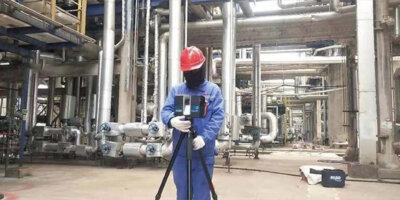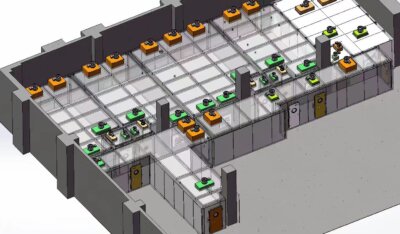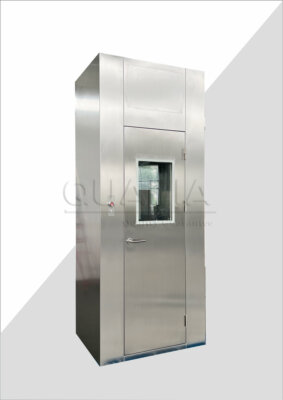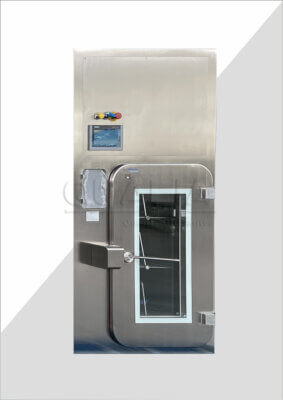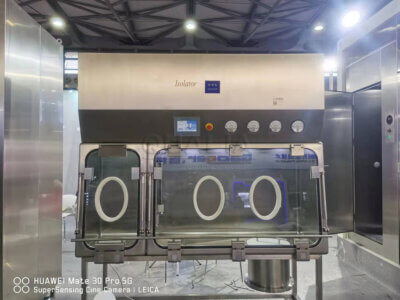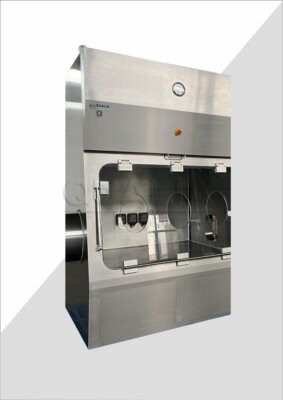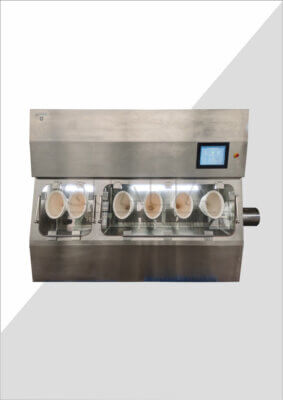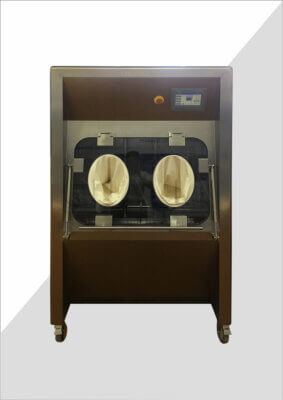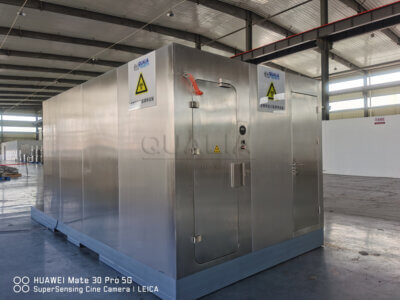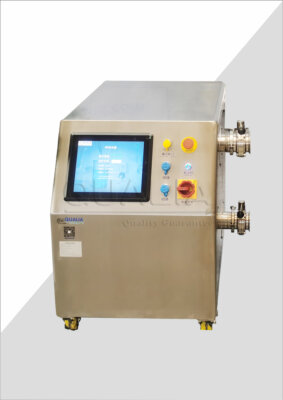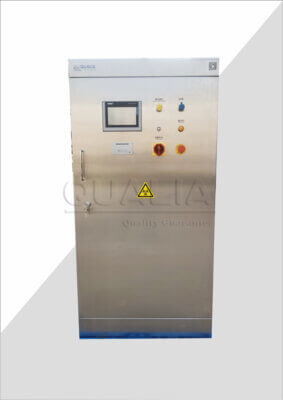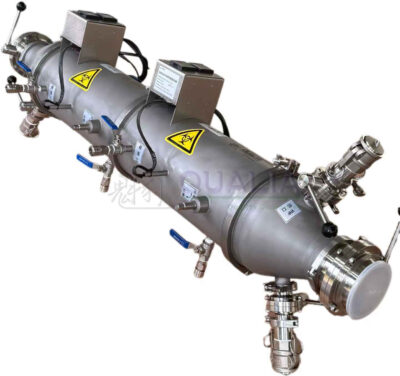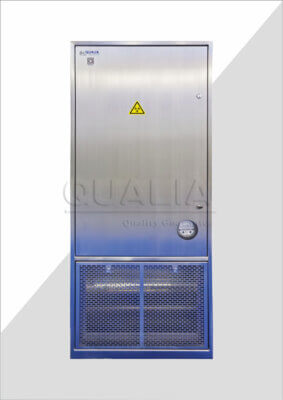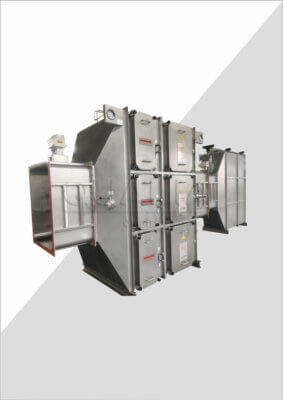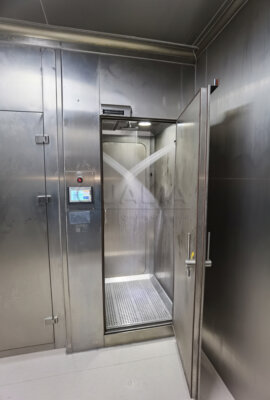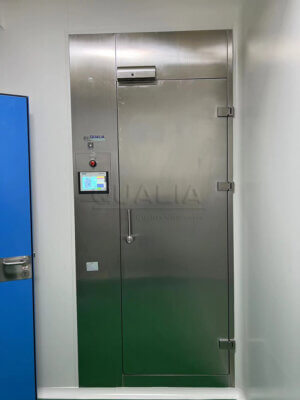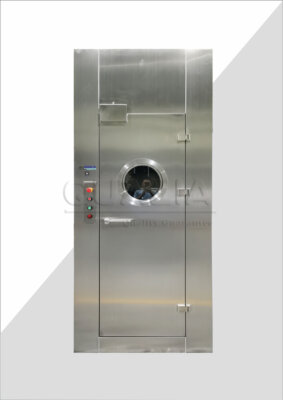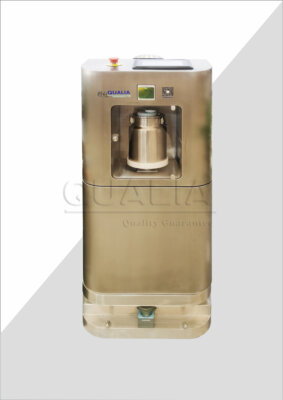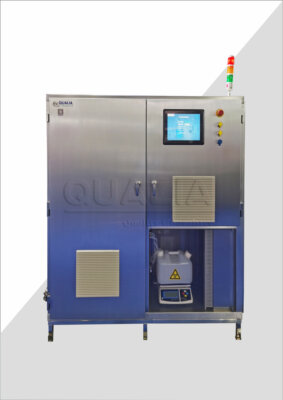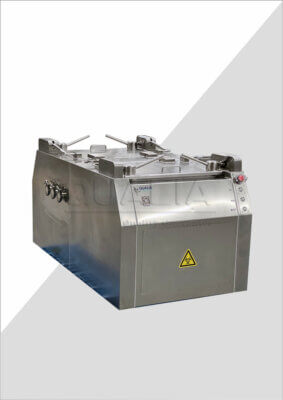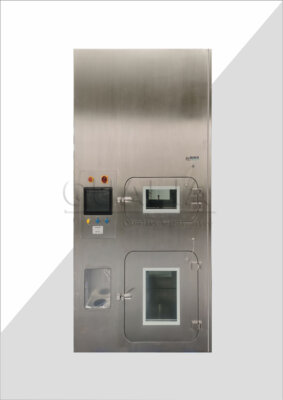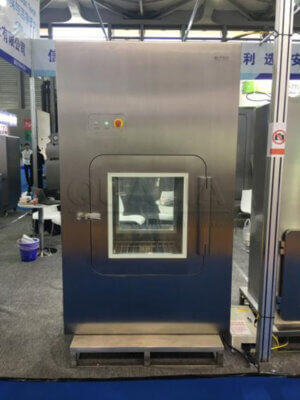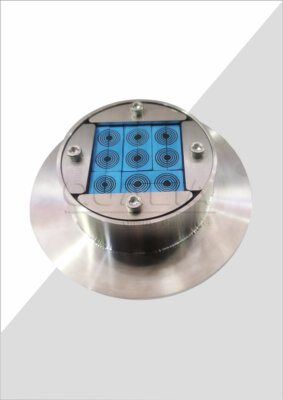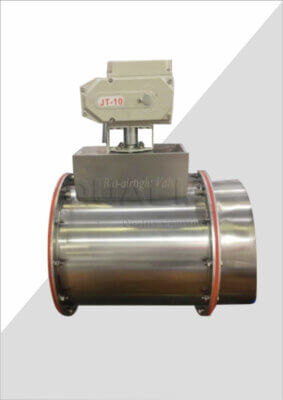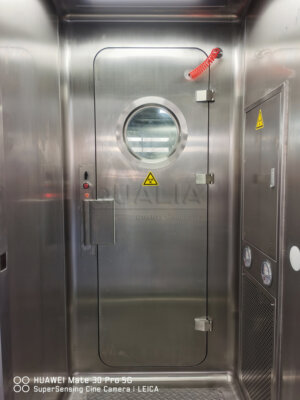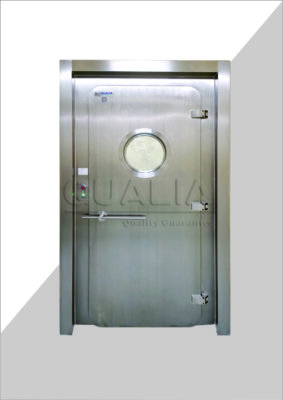In the ever-evolving landscape of pharmaceutical and biotechnology industries, the demand for safe, efficient, and flexible containment solutions has never been higher. Enter the realm of portable OEB4/OEB5 isolator units, a cutting-edge innovation that combines mobility with uncompromising safety standards. These advanced containment systems are revolutionizing how high-potency compounds and sensitive materials are handled across various settings, from research laboratories to production facilities.
Portable OEB4/OEB5 isolator units represent a significant leap forward in containment technology, offering a perfect blend of versatility and protection. These systems are designed to meet the stringent requirements of Occupational Exposure Bands 4 and 5, ensuring the highest level of operator safety and product integrity. As the industry continues to push boundaries in drug development and manufacturing, these portable isolators are becoming indispensable tools for organizations striving to maintain compliance while enhancing operational flexibility.
As we delve deeper into the world of portable OEB4/OEB5 isolators, we'll explore their key features, applications, and the transformative impact they're having on pharmaceutical and biotech processes. From their advanced filtration systems to their modular designs, we'll uncover how these units are addressing long-standing challenges in containment and paving the way for more agile and secure operations.
"Portable OEB4/OEB5 isolator units are redefining the standards of containment in pharmaceutical and biotechnology industries, offering unprecedented levels of safety and flexibility for handling high-potency compounds and sensitive materials."
What are the key features of portable OEB4/OEB5 isolator units?
Portable OEB4/OEB5 isolator units are at the forefront of containment technology, boasting an array of features designed to ensure maximum safety and efficiency. These advanced systems incorporate state-of-the-art engineering to create a controlled environment that meets the most stringent industry standards.
At the heart of these isolators is a sophisticated air handling system that maintains a unidirectional airflow, crucial for preventing cross-contamination and ensuring operator safety. This system works in tandem with HEPA filtration to create a pristine working environment, suitable for the most sensitive operations.
One of the standout features of QUALIA's portable OEB4/OEB5 isolator units is their modular design. This innovative approach allows for easy customization and scalability, enabling organizations to adapt the isolators to their specific needs and space constraints. The modular nature also facilitates maintenance and upgrades, ensuring that the isolators can evolve with changing requirements.
"Our portable OEB4/OEB5 isolator units are engineered with a modular design that allows for unparalleled flexibility and ease of customization, meeting the diverse needs of modern pharmaceutical and biotech facilities."
| Feature | Benefit |
|---|---|
| Unidirectional Airflow | Prevents cross-contamination |
| HEPA Filtration | Ensures particle-free environment |
| Modular Design | Enables customization and scalability |
| VHP Sterilization | Provides thorough decontamination |
In conclusion, the key features of portable OEB4/OEB5 isolator units combine to create a containment solution that is not only highly effective but also adaptable to a wide range of applications. These features work in harmony to provide a safe, controlled environment that meets the exacting standards of OEB4 and OEB5 classifications, while offering the flexibility needed in today's dynamic pharmaceutical and biotech industries.
How do portable isolators enhance operational flexibility?
Portable OEB4/OEB5 isolator units are revolutionizing operational flexibility in pharmaceutical and biotechnology settings. These innovative containment solutions offer a level of mobility and adaptability that was previously unattainable with traditional fixed isolator systems.
The portability of these units allows facilities to quickly reconfigure their workspace to meet changing production needs or research requirements. This flexibility is particularly valuable in multi-product facilities or research environments where different containment levels may be required for various projects.
Portable OEB4/OEB5 isolator units can be easily moved between different areas of a facility, enabling organizations to optimize their use of space and equipment. This mobility also facilitates maintenance and cleaning procedures, as units can be relocated to dedicated service areas when necessary.
"Our portable isolators offer unprecedented operational flexibility, allowing facilities to adapt quickly to changing production needs and optimize space utilization without compromising on containment integrity."
| Flexibility Aspect | Benefit |
|---|---|
| Mobility | Easy relocation between workspaces |
| Adaptability | Suitable for various containment needs |
| Space Optimization | Efficient use of facility area |
| Maintenance Ease | Simplified cleaning and servicing |
In conclusion, the enhanced operational flexibility provided by portable OEB4/OEB5 isolator units is transforming how pharmaceutical and biotech facilities approach containment. By offering a mobile and adaptable solution, these isolators enable organizations to respond swiftly to changing requirements, optimize their resources, and maintain the highest standards of safety and efficiency in their operations.
What safety standards do portable OEB4/OEB5 isolators meet?
Portable OEB4/OEB5 isolator units are designed to meet the most stringent safety standards in the pharmaceutical and biotechnology industries. These advanced containment systems adhere to the Occupational Exposure Bands (OEB) 4 and 5, which represent the highest levels of containment required for handling highly potent compounds and sensitive materials.
The safety standards for these isolators encompass a wide range of requirements, from air handling and filtration to material transfer and decontamination protocols. They are engineered to provide a hermetically sealed environment that prevents the escape of hazardous substances and protects both operators and products from contamination.
One of the key safety features of these isolators is their advanced air handling system. This system maintains a negative pressure environment within the isolator, ensuring that any potential leaks are contained within the unit. Additionally, the HEPA filtration system removes 99.997% of particles 0.3 microns or larger, creating an ultra-clean working environment.
"Our portable OEB4/OEB5 isolators are rigorously tested and certified to meet the most demanding safety standards, ensuring the highest level of protection for operators and maintaining product integrity in compliance with GMP regulations."
| Safety Standard | Requirement |
|---|---|
| OEB 4/5 Containment | <1.0 µg/m³ airborne concentration |
| HEPA Filtration | 99.997% efficiency at 0.3 microns |
| Negative Pressure | Continuous inward airflow |
| VHP Sterilization | 6-log reduction of biological indicators |
In conclusion, portable OEB4/OEB5 isolator units are built to meet and exceed the most rigorous safety standards in the industry. By incorporating advanced technologies and adhering to strict regulatory requirements, these isolators provide a safe and compliant environment for handling high-potency compounds and sensitive materials, ensuring the protection of both personnel and products.
How do portable isolators compare to traditional fixed systems?
When comparing portable OEB4/OEB5 isolator units to traditional fixed systems, several key differences emerge that highlight the advantages of mobility in containment solutions. Portable isolators offer a level of flexibility and adaptability that fixed systems simply cannot match, while still maintaining the high standards of containment required for OEB4 and OEB5 applications.
One of the most significant advantages of portable isolators is their ability to be relocated as needed. This mobility allows facilities to reconfigure their workspace quickly and efficiently, adapting to changing production needs or research requirements. In contrast, fixed systems are permanently installed, limiting the facility's ability to modify its layout or repurpose spaces.
Portable isolators also offer advantages in terms of scalability and modularity. These units can be easily added or removed from a production line or research area, allowing organizations to scale their containment capabilities up or down as needed. This flexibility is particularly valuable in multi-product facilities or research environments where containment needs may vary over time.
"Our portable OEB4/OEB5 isolators provide the same high level of containment as fixed systems, but with the added benefits of mobility and scalability, allowing facilities to adapt quickly to changing needs without compromising on safety or efficiency."
| Feature | Portable Isolators | Fixed Systems |
|---|---|---|
| Mobility | High | None |
| Scalability | Easily scalable | Limited |
| Installation | Minimal disruption | Extensive construction |
| Space Utilization | Flexible | Fixed |
| Initial Cost | Generally lower | Higher |
In conclusion, while both portable and fixed isolator systems can provide the necessary containment for OEB4 and OEB5 applications, portable isolators offer significant advantages in terms of flexibility, scalability, and cost-effectiveness. These benefits make portable OEB4/OEB5 isolator units an attractive option for organizations looking to enhance their containment capabilities while maintaining operational agility.
What industries benefit most from portable OEB4/OEB5 isolators?
Portable OEB4/OEB5 isolator units have found applications across a wide range of industries, particularly those dealing with high-potency compounds and sensitive materials. The pharmaceutical and biotechnology sectors stand out as the primary beneficiaries of this technology, but their utility extends to other fields as well.
In the pharmaceutical industry, these isolators are invaluable for the development and production of highly potent active pharmaceutical ingredients (HPAPIs). They provide the necessary containment for handling substances with occupational exposure limits below 1 μg/m³, ensuring worker safety and product integrity throughout the manufacturing process.
The biotechnology sector also heavily relies on portable OEB4/OEB5 isolators for various applications, including cell and gene therapy production, where maintaining a sterile environment is crucial. These isolators offer the flexibility needed in research and development settings, where different projects may require varying levels of containment.
"Our portable OEB4/OEB5 isolators have proven to be game-changers in the pharmaceutical and biotech industries, enabling safe handling of high-potency compounds and facilitating cutting-edge research in fields like cell and gene therapy."
| Industry | Application |
|---|---|
| Pharmaceuticals | HPAPI production |
| Biotechnology | Cell and gene therapy |
| Academic Research | Hazardous compound studies |
| Contract Manufacturing | Multi-product facilities |
| Nuclear Medicine | Radiopharmaceutical handling |
In conclusion, while the pharmaceutical and biotechnology industries are the primary beneficiaries of portable OEB4/OEB5 isolator units, their applications extend to various other sectors where high-level containment and flexibility are required. The versatility and safety features of these isolators make them indispensable tools in advancing research and production across multiple industries.
How do portable isolators facilitate compliance with regulatory standards?
Portable OEB4/OEB5 isolator units play a crucial role in helping organizations maintain compliance with stringent regulatory standards in the pharmaceutical and biotechnology industries. These isolators are designed with regulatory requirements in mind, incorporating features that ensure adherence to Good Manufacturing Practices (GMP) and other relevant guidelines.
One of the key ways portable isolators facilitate compliance is through their advanced containment capabilities. By providing a controlled environment that meets OEB4 and OEB5 standards, these units ensure that facilities can handle high-potency compounds and sensitive materials in accordance with occupational exposure limits set by regulatory bodies.
The modular design of portable isolators also contributes to compliance efforts. This feature allows for easy validation and qualification processes, as each module can be individually tested and certified. Additionally, the ability to easily clean and decontaminate these units supports compliance with cleanliness and sterility requirements.
"Our portable OEB4/OEB5 isolators are engineered to meet the most stringent regulatory standards, incorporating features that simplify validation, qualification, and ongoing compliance efforts for our clients."
| Compliance Aspect | Isolator Feature |
|---|---|
| Containment | OEB4/OEB5 rated barriers |
| Cleanliness | VHP sterilization capability |
| Documentation | Integrated monitoring systems |
| Validation | Modular design for easy testing |
| Operator Safety | Ergonomic design with safety interlocks |
In conclusion, portable OEB4/OEB5 isolator units are invaluable tools for maintaining regulatory compliance in pharmaceutical and biotechnology operations. By offering advanced containment, easy validation, and comprehensive documentation capabilities, these isolators help organizations navigate the complex landscape of industry regulations while ensuring the safety of their personnel and the integrity of their products.
What maintenance considerations are unique to portable isolators?
Maintaining portable OEB4/OEB5 isolator units requires a unique approach that differs from traditional fixed systems. The mobility and modular nature of these isolators introduce specific considerations that facilities must address to ensure optimal performance and longevity of the equipment.
One of the primary maintenance considerations for portable isolators is the need for regular integrity checks. The frequent movement of these units can potentially impact seals and connections, making it crucial to perform routine inspections to verify the integrity of the containment system. This includes checking glove ports, transfer systems, and any other potential breach points.
Another important aspect is the maintenance of the air handling and filtration systems. While these components are similar to those found in fixed isolators, the portable nature of the units means they may be exposed to different environmental conditions as they are moved between locations. Regular filter changes and system performance checks are essential to maintain the required level of containment.
"Our portable OEB4/OEB5 isolators are designed with ease of maintenance in mind, featuring accessible components and modular systems that simplify routine checks and repairs, ensuring consistent performance and compliance."
| Maintenance Aspect | Consideration |
|---|---|
| Integrity Checks | Regular seal and connection inspections |
| Filtration System | Frequent filter changes and performance tests |
| Mobility Components | Inspection of wheels, handles, and locking mechanisms |
| Decontamination | Scheduled VHP cycles and surface cleaning |
| Calibration | Regular calibration of monitoring instruments |
In conclusion, while portable OEB4/OEB5 isolator units offer significant advantages in terms of flexibility and adaptability, they also require a tailored maintenance approach. By addressing the unique considerations associated with portable systems, organizations can ensure the continued effectiveness and compliance of their containment solutions, maximizing the benefits of these versatile units.
How are portable OEB4/OEB5 isolators shaping the future of containment technology?
Portable OEB4/OEB5 isolator units are at the forefront of a significant shift in containment technology, driving innovation and reshaping how industries approach safety and efficiency in handling high-potency compounds and sensitive materials. These advanced systems are not just meeting current needs but are also paving the way for future developments in containment solutions.
The trend towards increased flexibility and adaptability in pharmaceutical and biotechnology operations is perfectly aligned with the capabilities of portable isolators. As the industry continues to move towards more agile manufacturing processes and multi-product facilities, the demand for containment solutions that can keep pace with these changes is growing rapidly.
One of the key ways portable OEB4/OEB5 isolators are influencing the future of containment technology is through their integration with Industry 4.0 concepts. Advanced monitoring systems, IoT connectivity, and data analytics are being incorporated into these units, allowing for real-time monitoring, predictive maintenance, and enhanced process control.
"We are witnessing a paradigm shift in containment technology, with our portable OEB4/OEB5 isolators leading the way in combining mobility, advanced safety features, and smart technology to meet the evolving needs of the pharmaceutical and biotech industries."
| Future Trend | Impact on Containment Technology |
|---|---|
| Smart Connectivity | Real-time monitoring and control |
| Sustainable Design | Energy-efficient and eco-friendly materials |
| Augmented Reality | Enhanced operator training and guidance |
| Modular Scalability | Easily adaptable to changing production needs |
| Automated Decontamination | Improved safety and efficiency in cleaning processes |
In conclusion, portable OEB4/OEB5 isolator units are not just a current solution but a glimpse into the future of containment technology. By combining mobility with advanced safety features and smart technology, these isolators are setting new standards in the industry. As they continue to evolve, we can expect to see even more innovative applications and integrations that will further enhance safety, efficiency, and flexibility in handling high-potency compounds and sensitive materials.
In conclusion, portable OEB4/OEB5 isolator units represent a significant leap forward in containment technology, offering a perfect blend of mobility, safety, and efficiency. These advanced systems are revolutionizing how pharmaceutical and biotechnology industries approach the handling of high-potency compounds and sensitive materials, providing unprecedented flexibility without compromising on safety standards.
The key features of these portable isolators, including their modular design, advanced air handling systems, and integration with smart technologies, position them at the forefront of containment solutions. They not only meet the stringent requirements of OEB4 and OEB5 classifications but also offer the adaptability needed in today's dynamic research and manufacturing environments.
As we've explored throughout this article, the benefits of portable OEB4/OEB5 isolators extend beyond mere containment. They enhance operational flexibility, facilitate regulatory compliance, and open up new possibilities for agile manufacturing and research processes. The unique maintenance considerations and the ways these units are shaping the future of containment technology underscore their importance in the industry.
Looking ahead, it's clear that portable OEB4/OEB5 isolator units will continue to play a crucial role in advancing safety and efficiency in pharmaceutical and biotechnology operations. As the industry evolves, these versatile containment solutions will undoubtedly adapt and improve, driving innovation and setting new standards for safety and performance.
In an era where flexibility, safety, and efficiency are paramount, portable OEB4/OEB5 isolator units stand as a testament to the power of innovative engineering in addressing complex industry challenges. As we move forward, these advanced containment solutions will undoubtedly continue to be a cornerstone of safe and efficient operations in the pharmaceutical and biotechnology sectors.
External Resources
OEB4 / OEB5 Isolator – BioSafe Tech by QUALIA – This page describes the OEB4 / OEB5 Isolator, a cutting-edge enclosed isolation system designed for OEB production defense, sterile production, aseptic experimentation, and biosafety. It highlights features such as Uni-Directional Airflow, VHP Sterilization, and modular design compliant with GMP standards.
OEB5 High Containment Isolator – CPHI Online – This resource details the OEB5 High Containment Isolator, which includes features like independent AHU, safe replaceable bucket filter PUSH-PUSH, inflatable sealing of the operation door, and continuous bagging/RTP waste discharge. It is ideal for vessel automatic washing and powder pretreatment.
OEL / OEB – Esco Pharma – This page discusses equipment recommendations for handling materials at OEB4/OEB5 levels, including the use of isolators. It provides guidelines on when to use isolators versus reverse oRABs based on the quantity and task duration.
Pharma OEB Best Practice – 3M – Although not specifically focused on portable units, this document provides best practices for handling materials at OEB levels, including the use of isolators and contained transfer devices, which is relevant for understanding the broader context of OEB4/OEB5 isolators.
Containment Solutions – ILC Dover – This page covers containment solutions, including isolators, designed to handle highly potent APIs at OEB4/OEB5 levels. It details the safety features and operational benefits of such systems.
OEB Isolators – MBRAUN – This resource focuses on MBRAUN's isolators designed for OEB4/OEB5 applications, highlighting their safety features, such as glove boxes, and their suitability for various pharmaceutical processes.
Related Contents:
- The Future of Containment: OEB4 vs OEB5 Isolators
- OEB4/OEB5 Glove Box Isolators: Handling Potent Compounds
- OEB4/OEB5 Isolators: Top High Containment Systems
- Biosafety OEB4/OEB5 Isolators: Complete Protection Guide
- Isolators vs. Containment: Advancing Pharmaceutical Safety
- Isolators: Ensuring GMP Compliance in Pharma
- Safeguarding Potent Compounds: Choosing the Right OEB4/OEB5 Isolator
- Safeguarding Operators: The Power of OEB5 Isolator Technology
- Tailoring Containment: OEB4/OEB5 Isolators in Pharma


